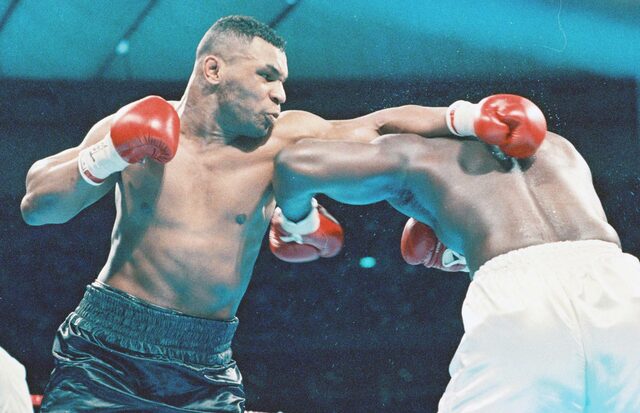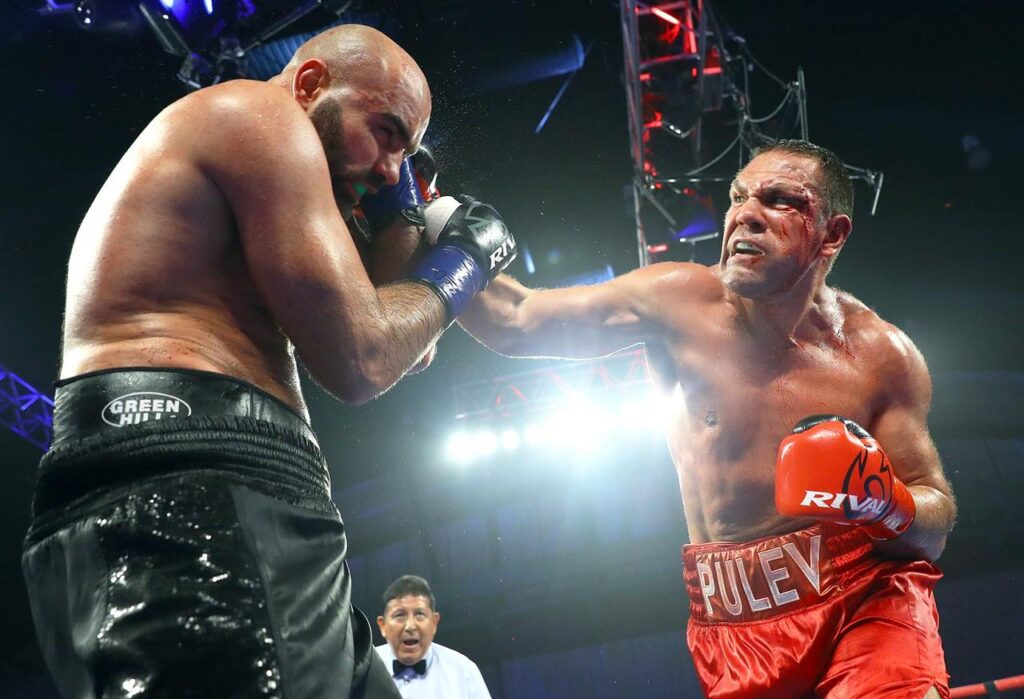
Lightweight boxing is an exciting category that requires skill and speed.
Although there is a weight limit in this weight class, fighters use their high technical ability and speed of movement to engage in heated battles.
In this article, we will explore the appeal of lightweight boxing. We will explain in detail the evolution from history to modern times, important rules, training methods, and memorable battles.
Through this guide, you will understand the deep history of lightweight boxing, its cultural significance, and learn about its influence today.
We also explore how lightweight ranks as one of the most technical and strategic boxing styles.
The lightweight world is fascinating and offers plenty of inspiration, not just for boxing fans but also for those just starting to take an interest in the sport.
目次
History and evolution of lightweight boxing
Lightweight boxing has had a long history and has undergone many changes to its current status.
This weight class plays an important role in competitive boxing and has produced many legendary fighters.
Below, we explore how the lightweight division was formed and what historic matches took place.
Origin of lightweight
Boxing’s lightweight division was officially established in 1909, but its origins go back much further than that.
In the early days of boxing, there were no clear weight categories, and fighters were free to choose their own weight class.
However, as the sport developed, weight classes were established to create a more level playing field, and lightweight was established as one of them.
Lightweight is generally defined as a category in which athletes weighing 135 pounds or less compete.
Major changes and historic matches
Throughout the history of the lightweight division, we have seen many changes.
Technological advances were particularly noticeable, and athletes’ tactics and training methods evolved with the times, contributing to raising the level of the sport as a whole.
The most famous historic match is the 1956 fight between Joe Brown and Wallace Bud Smith.
In this match, Joe Brown won the lightweight championship with great skill and strategy.
Also, in the 1980s, fighters such as Hector Camacho and Julio Cesar Chavez made a name for themselves in the lightweight division, and their matches are still fresh in the memories of many boxing fans.
Although these fighters were limited to their lightweight weight, they fought with their speed and skill in many dramatic battles, and carved their names into boxing history.
The lightweight division will continue to evolve and will be the stage for new star fighters to emerge.

Lightweight rules and features
One of the attractions of lightweight boxing is its unique rules and tactics.
Here, we’ll focus on weight limits and tactics specific to the lightweight division, and explain in detail how these affect the face of the match.
Category weight limit
Lightweight boxing fighters must weigh no more than 135 pounds (approximately 61.23 kilograms).
This weight limit is set to allow athletes to make the most of their technique and speed, and requires faster movement and more technical fighting than in heavier weight classes.
Weight control is an important factor for lightweight boxers, and pre-fight weight adjustment is done with great precision as part of their tactics.
Lightweight unique tactics
Lightweight is more about speed and agility than other weight classes.
This is due to the physical characteristics of lightweight fighters, who require particularly fast punching speed and agility in dodging, so their tactics have evolved accordingly.
In lightweight fights, the key to success is the speed of consecutive strikes and counters with precise timing, and by making full use of these, you can strategically score points while putting pressure on your opponent.
Durability is also important for lightweight athletes, so they must have the physical and mental fortitude to fight through long rounds.
This requires a high level of fitness and tactical endurance, and distribution of physical strength during the match is also an important tactic.
A combination of proper physical management and tactical movement will result in fierce competition in the lightweight division.
Understanding the rules and characteristics of lightweight is the key to deeply enjoying this category of boxing.
Lightweight matches require a high level of skill, speed, and strategy, and provide an extremely exciting experience for those watching.

Training methods and techniques
Lightweight boxers require speed, agility, and technique.
There are a wide variety of training methods to hone these skills, but it is common to start with a basic training program and gradually progress to more advanced techniques.
Here, we will explain in detail the training methods used by lightweight boxers and tips for improving their technique.
basic training program
A lightweight boxer’s training program begins with basic physical fitness.
First, running, skipping, and shadow boxing are routinely done to increase endurance and strength.
This will develop the sustained energy and stamina needed for the match.
Next, you will be trained to improve the accuracy and power of your punches through punching bags and mitts.
These exercises place special emphasis on increasing punching speed and accuracy and require the ability to deliver consecutive and accurate punches.
Improving the technique of lightweight boxers
In order to improve the technique of a lightweight boxer, not only technical practice but also tactical understanding is essential.
Sparring is a very effective way to test your skills in a way that closely resembles a real fight, and helps you learn how to move and react in a real fight.
It is also important to use video analysis to look back on past matches and objectively evaluate your weaknesses and areas for improvement.
Technical skill development includes drills to improve footwork and practicing certain punch combinations repeatedly.
For example, practice is held to hone techniques that can be used in matches, such as consecutive jabs and straight shots, and combinations that aim at the face after attacking the body.
What lightweight boxers must always keep in mind when training is to balance speed and accuracy.
If you can acquire these skills, your performance in matches will greatly improve and will greatly contribute to your victory.
Training is not just about building physical strength; continuous improvement in both technique and tactics is the most important goal for lightweight boxers.

Lightweight world champions and their history
Boxing’s lightweight division is home to many legendary champions.
These champions left their own mark on boxing history with their skill and strategy.
This section details the history of past lightweight champions and some of the most influential fighters.
All-time lightweight champion
The lightweight world champion’s history is filled with great fights and memorable moments.
An early champion, Benny Leonard gained fame in the 1920s for his technical style and sharp counterpunches.
In addition, athletes such as Roberto Duran, Julio Cesar Chavez, and Pernell Whitker were also famous lightweight boxers who shook the world.
They each won titles in different eras and continued to fascinate fans with their outstanding boxing styles.
influential lightweight fighter
There are many influential fighters in the lightweight division, but Floyd Mayweather Jr. stands out.
His defensive techniques and strategic approach are textbook boxing techniques.
Mayweather is considered one of the most successful fighters in boxing history, being undefeated in the lightweight division and going on to become champion in multiple weight classes.
These champions have had a huge impact on not only the history of the lightweight division, but the evolution of boxing as a whole.
Their tactics and strategies have been learned by today’s boxers and are being used by new generations of fighters.
Lightweight is a category that requires skill and speed, and the champions who have made a name for themselves in that category are athletes who have brought together the best of these techniques.

Lightweight matches and strategy analysis

Lightweight Modern Strategies and Trends
Tactics and training methods in lightweight boxing are evolving along with technological innovations.
The latest scientific approaches and technological advances are driving innovation in training methods and tactics, which lightweight boxers use to maximize performance.
In this section, we delve into the latest training methodologies and tactical innovations.
Latest training methods
Lightweight boxer training incorporates the latest scientifically based methods.
For example, high-intensity interval training (HIIT) is widely used to achieve high results in a short amount of time.
This training involves short periods of high-intensity exercise, followed by short periods of rest, to improve cardiovascular fitness and burn fat.
Wearable technology also allows you to monitor your heart rate, calories burned, and exercise quality in real time, making your training even more efficient.
innovation in tactics
The tactics of lightweight boxers are also changing due to advances in technology.
With the evolution of video analysis tools, it has become common practice to analyze your opponent’s tactics in detail, find their weaknesses, and develop countermeasures.
In addition, training programs using virtual reality (VR) have been introduced to develop reaction speed and decision-making skills in an environment that mimics a real game.
This dramatically improves performance in real matches.
These latest training methods and tactical innovations are extremely important for lightweight boxers.
This will help them stay ahead of the curve and prepare them to win in the competitive lightweight world.
These innovations, brought about by advances in science and technology, are key factors in shaping the future of sport.

Resources for learning lightweight boxing
Proper training facilities and educational resources are essential to learning lightweight boxing.
In addition to traditional training facilities, there are also plenty of online learning options available today, allowing you to choose the learning method that’s right for you.
This section details physical training facilities and schools, as well as courses and media available online.
Training facilities and schools
There are many gyms and academies across the country that specialize in lightweight boxing.
At these facilities, you can receive instruction from experienced trainers, from basic to advanced techniques.
For example, large cities such as New York and Los Angeles are home to many prominent boxing gyms that offer advanced programs for competitors.
These facilities offer one-on-one sessions, group classes, and personalized training plans to help individuals improve their skills.
Online courses and media
With the proliferation of the internet, there are more resources available to learn boxing techniques online.
Many professional boxers and trainers offer online courses and video tutorials that allow you to learn basic techniques and strategies at home.
YouTube and specialized sports education platforms provide a wealth of information on tactical explanations, training methods, and health management.
These resources allow you to study at your own pace, without being tied to time or location.
By properly utilizing these resources, it is possible to effectively improve your lightweight boxing skills.
Gaining experience in a real training facility while supplementing your knowledge with online resources is the key to improving your skills.



